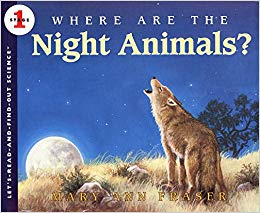Where Are The Night Animals?
分級讀本/橋梁書
Where Are The Night Animals?
書籍資訊
| 適讀年齡 | 4 - 8 |
| 適合年級 | P - 2 |
| 字數 | 755 字 |
| Grade level equivalent | 2.0 |
| AR level | 3.5 |
| F&p/guided reading level | |
| Lexile | |
| DRA level | |
| 出版社 | HarperCollins |
| 出版日期 | December 1998 |
Describes various nocturnal animals--including the opossum, barn owl, coyote, brown bat, and tree frog--and their nighttime activities, and teaches new readers how to look for night animals with a special activities section.
同系列的其他書籍

What's It Like to Be a Fish?
Could you live underwater?You can't breathe underwater, but a fish can. You can't eat underwater, but a fish does it every day. A fish's body is perfectly designed for life in water, just as your body is perfect for living on land. Read and find out how a fish's sleek body, fins, scales, and gills keep him in the swim! Then read on to learn how to set up your own goldfish bowl.

From Caterpillar to Butterfly
A caterpillar comes to school in a jar and the class watches the caterpillar each day as it grows and changes. Soon, it disappears into a hard shell called a chrysalis. Where did it go? This is a perfect beginner's guide to the mystery of metamorphosis. Named as a NSTA/CBC Outstanding Science Trade Books for Children, this book explains the life cycle from caterpillar to butterfly with easy-to-follow prose from Deborah Heiligman and warm, colorful illustrations from Bari Weissman. This is a Stage 1 Let's-Read-and-Find-Out, which means the book explains simple science concepts for preschoolers and kindergarteners. Let's-Read-And-Find-Out is the winner of the American Association for the Advancement of Science/Subaru Science Books & Films Prize for Outstanding Science Series. Supports the Common Core Learning Standards and Next Generation Science Standards

Sounds All Around
Sounds are all around us.Clap your hands, snap your fingers: You're making sounds. Read and find out how people and animals use different kinds of sounds to communicate.
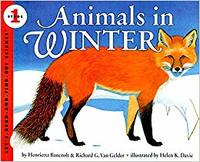
Animals In Winter
Describes the many different ways animals cope with winter, including migration, hibernation, and food storage.

The Big Dipper
Explains basic facts about the Big Dipper, including which stars make up the constellation, how its position changes in the sky, and how it points to the North Star.

Pop! A Book About Bubbles
Why are soap bubbles always round? Why do they always go POP? Simple, clear text explains the basic science behind an activity every child loves.

My Feet
Brief text and illustrations describe the various parts of the foot and all the things feet help us to do.

What's Alive?
Looks at the qualities people have in common with other living things, including cats, trees, and birds.
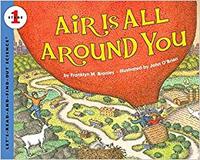
Air Is All Around You
Describes the various properties of air and shows how to prove that air takes up space and that there is air dissolved in water.

How a Seed Grows
Once, a long time ago, the oak tree in your backyard could have fit your pocket! How can a little acorn grow so big? This book shares the secret of seeds. With the right combination of water, sun, and soil a seed will send roots down into the ground and shoot leaves up into the sunlight. Seeds can grow into flowers or vegetables or even trees. Look inside to learn the simple steps for turning a packet of seeds into a garden.

A Tree Is a Plant
A tree is the biggest plant that grows. Trees can live for a very long time, and they are alive all year long, even when they look dead in winter. Clyde Robert Bulla's accessible text and Stacey Schuett's lush, accurate illustrations follow a tree's continuous life cycle through spring, summer, winter, and fall.This is a Stage 1 Let's-Read-and-Find-Out, which means the book explains simple science concepts for preschoolers and kindergarteners. Let's-Read-And-Find-Out is the winner of the American Association for the Advancement of Science/Subaru Science Books & Films Prize for Outstanding Science Series.Supports the Common Core Learning Standards and Next Generation Science Standards.

How Animal Babies Stay Safe
How do animal babies survive in a dangerous world? Activities encourage young readers to think about the ways they themselves stay safe, and teach them what to do if they encounter a baby animal in the wild.
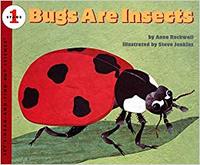
Bugs Are Insects
Is a spider an insect? Is a ladybug a bug? Lean how to tell what is an insect and what isn't, and discover the fascinating world of the tiny creatures who live in your own backyard.

From Seed to Pumpkin
Pumpkins can be baked in a pie, carved into jack-o'-lanterns, and roasted for a healthy snack. But how does a tiny seed turn into a big pumpkin? With clear text and detailed, colorful illustrations, this book explains what a pumpkin seed needs to help it grow! This book also includes delicious pumpkin recipes and easy experiments to do with pumpkin seeds. This is a Stage 1 Lets-Read-and-Find-Out, which means the book explains simple science concepts for preschoolers and kindergarteners. Lets-Read-And-Find-Out is the winner of the American Association for the Advancement of Science/Subaru Science Books & Films Prize for Outstanding Science Series. Supports the Common Core Learning Standards and Next Generation Science Standards

Baby Whales Drink Milk
The title epitomizes Esbensens creative presentation of an important concept: how whales differ from the fish they seem to resemble and share characteristics with other mammals. An excellent addition to the Lets-Read-and-Find-Out series.K. Introduces a full range of information about whale anatomy, development, and behavior. Esbensens simple, informative text keeps its young audience clearly in view.BL.

A Nest Full of Eggs
What's inside that pretty blue egg?A baby bird is growing inside that egg. Slowly the bird develops, until one day it cracks through the shell. Safe inside the nest, under the care of its parents, the chick grows stronger. Soon it will learn how to fly and take care of itself. By next spring it will be ready to build its own nest and raise chicks of its own.

Big Tracks, Little Tracks
Keeping a sharp eye out for clues like animal tracks and odors can help people identify the animals that have passed through an area.

Dinosaurs Big and Small
Some dinosaurs were big. How big? As long as four school buses in a row, as heavy as sixteen elephants. Some dinosaurs were small. How small? Read and find out!

What Lives in a Shell?
What makes a shell like a house?A house is a home for you, a nest is a home for a bird, and a cave is a home for a bear. But for some animals a shell is a home. Snails and turtles and crabs and clams all have shells that act as their homes and protect them from harm. In this book you'll learn all about these and other crustaceous creatures, for whom a shell is just the right sort of home.
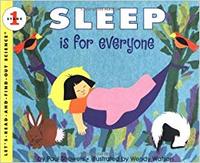
Sleep Is For Everyone
Discusses the importance of sleep and what happens to our brains and bodies during slumber.

My Five Senses
Explains the five ways in which a small boy can experience and enjoy the world around him

Sid the Science Kid: Everybody, Move Your Feet!
Let's-Read-and-Find-Out about ExerciseWhat would happen if you did nothing but watch TV all day? Why is it important to get up and play? Read and find out all about exercise with Sid the Science Kid!Introduce basic science concepts to young children and help satisfy their curiosity about how the world works.

Sid the Science Kid: Why Can't I Have Cake for Dinner?
Have you ever wondered what would happen if you ate cake all the time? Why do you need to eat a lot of different kinds of food? Read and find out all about nutrition with Sid the Science Kid!

Snow Is Falling
Describes snow's physical qualities and how quantities of it can be fun as well as dangerous.

Where Do Chicks Come From?
Describes what happens day-by-day for the three weeks from the time a hen lays an egg until the baby chick hatches. Let's-Read-And-Find-Out Science Stage 1.

Fireflies In The Night
Describes how and why fireflies make their light, how to catch and handle them, and several uses for firefly light.

Sid the Science Kid: A Cavity Is a Hole in Your Tooth
Let's-Read-and-Find-Out About TeethHave you ever wondered what would happen if you never brushed your teeth? Why do you need your teeth to be strong and hard? Read and find out all about teeth with Sid the Science Kid!

How Many Teeth?
Introduces teeth, describing how many we have at various stages of life, why they fall out, and what they do.
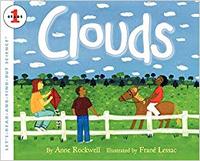
Clouds
Do you ever wake up and wonder what the weather will be? Instead of turning on the TV to find out, you can just look out your window at the clouds. How do you know what type of clouds can forecast a change of weather? Read and find out.

Ducks Don't Get Wet
Describes the behavior of different kinds of ducks and, in particular, discusses how all ducks use preening to keep their feathers dry.

Is There Life in Outer Space?
Life In Outer SpaceBears and birds, people and planets -- many things live on planet Earth. But do they live anywhere else? For a long time people have wondered about that. Maybe you have, too. Read and find out how scientists search for signs of life in outer space.
其他您可能會有興趣的書籍
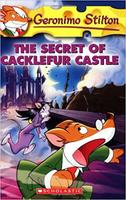
The Secret Of Cacklefur Castle
Moldy mozzarella, it was every mouse's worst nightmare! My old friend Creepella von Cacklefur called me one night and ordered me to join her for the weekend at her family's spooky castle. And before I could say "boo!" she'd mouse-napped me!

My Journey to the Stars
NASA astronaut Scott Kelly makes his Step into Reading debut in this engaging and easy-to-read autobiography that takes readers on his awe-inspiring journey from childhood to his record-breaking year among the stars. A Step 3 Biography Reader of American hero, Astronaut Scott Kelly! Scott wasn't sure what he wanted to be when he grew up. He struggled in school and often got in trouble with his twin brother, Mark. Then one day Scott discovered a book about test pilots and astronauts that set him on a new path. His new focus led him to fly higher and higher, becoming first a pilot and then an astronaut, along with his brother--the first twin astronauts in history. But his greatest accomplishment of all was commanding the International Space Station and spending nearly a year in space, which set the record for the longest spaceflight by an American.This story of an ordinary boy who grew up to do extraordinary things will amaze and inspire young readers. Step 3 Readers feature engaging characters in easy-to-follow plots about popular topics--for children who are ready to read on their own.

Hill of fire
A Mexican farmer and his young son witness the birth of a volcano on their land

Geronimo Stilton, Secret Agent
Geronimo Stilton, is a quiet, mild-mannered mouse, who keeps getting pulled into adventures. Narrated as if the books are autobiographical adventures, this series is Italy's most popular children's series and has been translated into English.

Singing Sensation
After being enrolled in the Song Festival, Geronimo Stilton's song, "Welcome to New Mouse City," goes to the top of the charts but very few CDs are sold. Will Geronimo and his detective friend, Hercule Poirat, be able to solve the mystery?
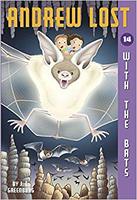
Andrew Lost with the Bats
Thanks to an invention mishap Andrew, Judy, and Thudd have been shrunk down to the size of bugs. Thats a serious problem when they get lost in a deep, dark, and bat-filled cave. Bats love to eat bugs! Will Andrew, Judy, and Thudd find a light at the end of the cave? Or is that really a glowing insect just waiting to eat them?

Junie B. Jones And That Meanie Jim's Birthday
The irrepressible Junie B. Jones returns in her sixth adventure as she sets out to even the score when she is not invited to Jim's birthday party.

Buffalo bill and the pony express
Recounts the adventures of 14-year-old Buffalo Bill Cody, who braved storms, wolves, and outlaws to earn himself the title of Bravest Rider on the Pony Express.

Rocks And Minerals
Developed by National Geographic in consultation with literacy education experts, a series of high-interest, exciting and easy-to-read books contain simple text, National Geographic photography and kid-friendly design, as well as loads of information about subjects that really matter to kids.

Sunflower Life Cycle
Book by Jeff Bauer

My Five Senses
Explains the five ways in which a small boy can experience and enjoy the world around him

Mr. Nosey
They're back! Rediscover the zaniest characters you've ever met in this best-selling series which has sold millions worldwide. Bright and charming, with easily recognizable characters and a small take-along format, Mr. Men and Little Miss books are easy enough for young readers, witty enough for humor-prone adults, and highly collectible for one and all. Also check your local listings to view the Mr. Men & Little Miss TV show.Back to the Mr. Men & Little Miss microsite.
